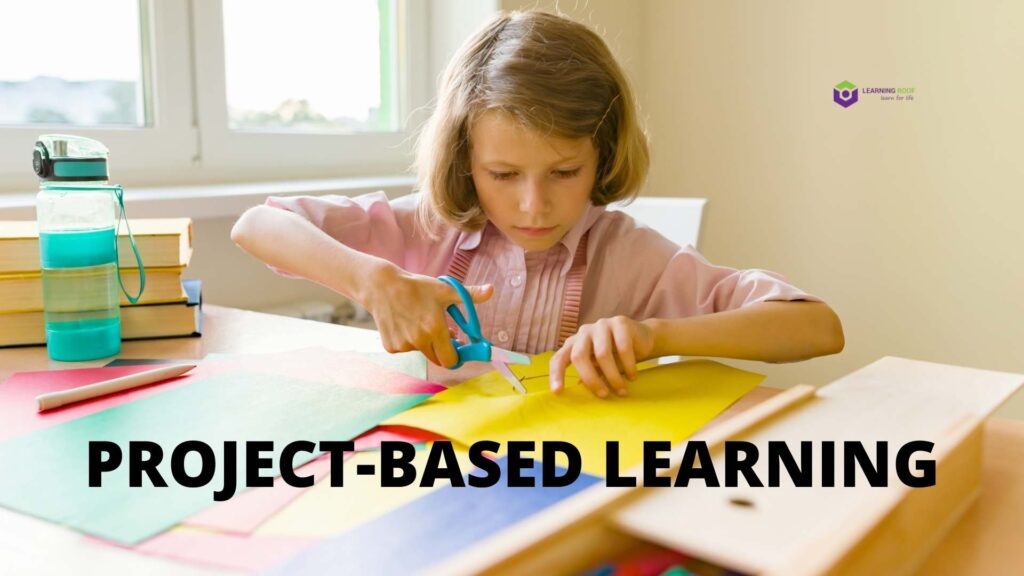Project-Based Learning

Project-Based Learning
If you want to spark curiosity in learners’ minds and assist them deepen their understanding of the world, undoubtedly, Project-based learning is the way out. In fact, by adopting project-based learning, educators assist young minds develop an explorer’s mindset and equip them with the skills, attitudes and knowledge to seek answers to the world’s most crucial issues and problems. No doubt, youngsters are the world’s most undiscovered assets for hope.” So let’s urge them to ask, gather, imagine, make, and act.
Step-By-Step approach to Project-Based Learning
1. Ask: Generate a question. Encouraging students to explore issues by asking driving questions. Asking questions or seeking answers are essential for young people to have a better understanding of the world. The inquisitive minds may pop up any questions. For instance, what effect does racism have in our community? What is the root cause? What all can we do about it?
2. Collect: Gather data. Next, students explore and assemble information to detail theories to their inquiries. This should be possible through exploring on the web sources, leading meetings with community members and specialists and taking photos.
3. Visualize: Envision, Organize and break down the data. When the students have obtained information and data, teachers can assist them with picturing the information in convincing manners, for example, graphs, maps or charts, that stamps their comprehension of the issue and backs it with proof. For instance, a student finishing a project on the Covid-19 pandemic, may make a color- coded map to show case counts in various areas just as a bar diagram indicating the normal age or pay in those regions.
4. Create: Develop stories. With an examination of the data they accumulated, students exhibit the solutions to their questions through different methods of story telling. A significant piece of the story-creation that signifies what results they would expect to happen based on their discoveries.
5. Act: Share stories. In the last advance, students make a move by sharing their stories. Once more, distant learning offer an assortment of story narrating alternatives. They may do it through hosting a webinar, making a website, or producing a video to introduce their discoveries and examination.
Adaptable approach
Most importantly, when teachers teach through project-based learning, they need to provide multiple situations for students to review and have a better understanding of the core content. Furthermore, project-based learning supports the virtual learning programs. Regardless of how and where the students learn, they can cultivate an explorer’s mindset through this practical learning approach.
90% of Brain Growth Happens Before 7 years of age.
Top 5 apps for coding to give a great start to kids
SAT Tutoring in Princeton Math Tutoring in Princeton Math Tutor in Princeton
Very good post! We will be linking to this particularly great content on our website. Keep up the good writing. Rozalie Sammy Evangelina
You made a few nice points there. I did a search on the topic and found a good number of folks will agree with your blog. Raquela Rowney Gino
This article offers clear idea designed for the new viewers of blogging, that truly how to do running a blog. Anet Perceval Hoxsie
Everything is very open with a clear explanation of the issues. It was really informative. Your site is extremely helpful. Thanks for sharing. Rafa Kris Skell
I blog frequently and I truly appreciate your content. The article has truly peaked my interest. Ania Parnell Capello
Your method of telling everything in this article is genuinely pleasant, all can without difficulty know it, Thanks a lot. Deirdre Tracy Lucilla
I enjoy your writing style really loving this internet site. Rasia Skye Trask
Keep up the fantastic work , I read few blog posts on this web site and I conceive that your blog is real interesting and has lots of good info . Gwenette Seamus Katusha
“Thanks for sharing, this is a fantastic blog post.Much thanks again. Cool.” Mikel Laremont
Comments are closed.